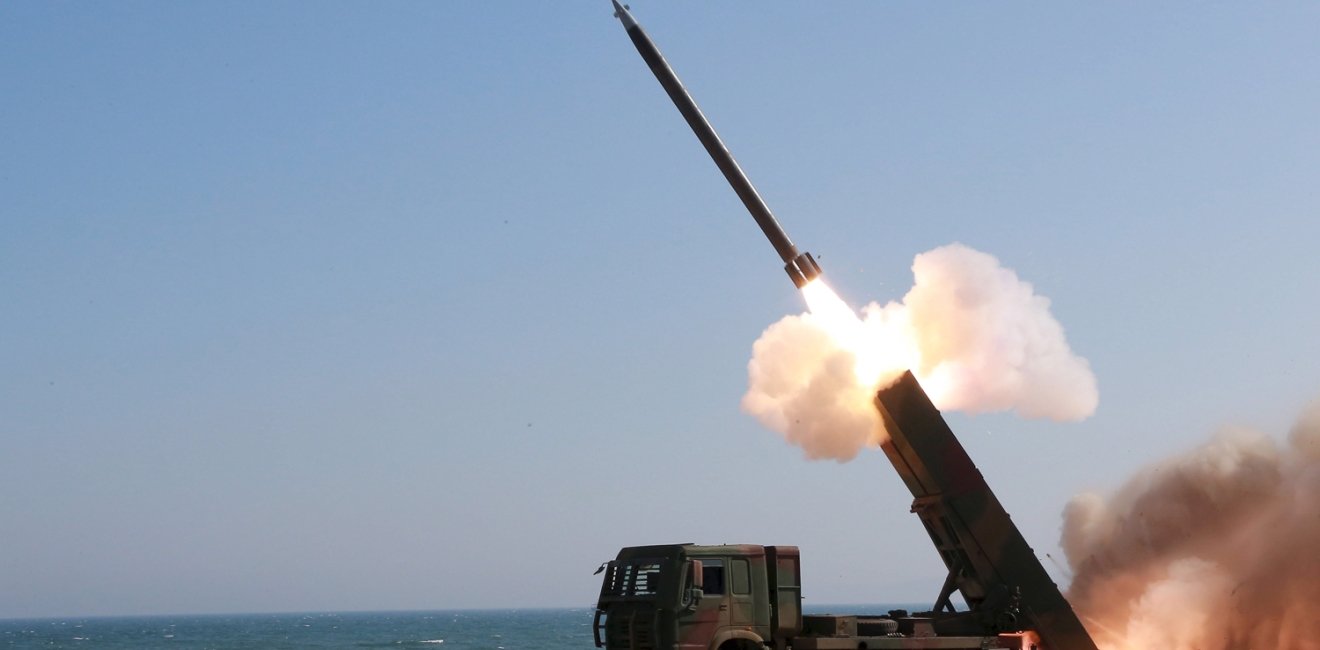How to Put North Korea's Nukes on Ice
Working with the U.S. to secure a freeze of Pyongyang's nuclear program is the best achievable outcome for Beijing as well as Washington, write Robert Litwak and Robert Daly.
Working with the U.S. to secure a freeze of Pyongyang's nuclear program is the best achievable outcome for Beijing as well as Washington, write Robert Litwak and Robert Daly.

Pyongyang's version of YouTube recently featured a computer-animated clip of a nuclear strike on Washington delivered via a North Korean ICBM. The North, which a decade ago tested its first nuclear weapon, will soon cross another threshold that could make its video propaganda a genuine threat: It will be able to attack the U.S. homeland with nuclear-tipped long-range ballistic missiles.
North Korea's potential nuclear breakout is both quantitative and qualitative. Unclassified American assessments estimate that North Korea will possess from 20 to 100 nuclear warheads by 2020, and some U.S. officials believe it has already achieved the miniaturization necessary to mount warheads on ballistic missiles.
An arsenal of this scale and quality would be a game-changer not only for the United States, but also for China, whose security interests would be harmed by the inevitable U.S. response — a significant arms buildup on China's doorstep. This convergence of Western and Chinese interests creates political space for coordinated diplomacy aimed at freezing North Korea's nuclear capabilities at the present level.
Relying on sanctions in hopes of bringing about the collapse of the Kim government won't work. Pyongyang has already withstood societal pressures, such as mass starvation in the 1990s, that would topple other governments. In 2002, on the assumption that the government of the late Kim Jong Il was teetering, the George W. Bush administration voided the 1994 Agreed Framework, which had resolved the first nuclear crisis of the early 1990s by freezing the North's plutonium program. It confronted Pyongyang over its alternate route to a bomb: covert uranium enrichment. The teeter never materialized; the bomb did.
The Obama administration came to office with hopes of reengaging the Kim government. After these ambitions were dashed by North Korean border provocations and nuclear tests, the U.S. defaulted to a policy of strategic patience. When Pyongyang rewarded patience with an additional nuclear test and missile launches earlier this year, the U.S., working through the United Nations Security Council, reverted to sanctions yet again. Alternating between strategic patience and sanctions has resulted in tacit acquiescence to North Korea's nuclear ambitions.
Beijing, meanwhile, will not permit sanctions to endanger the government of Kim's son, Kim Jong Un, which could precipitate a refugee crisis in northern China and lead to a unified Korea allied with the United States. (Only last week, Chinese President Xi Jinping declared “we will never allow … chaos on the Korean peninsula.”) But Beijing must now weigh that risk against a North Korean strategic breakout that could lead to the U.S. deploying its latest antiballistic missile system in South Korea.
Distasteful as those prospects are, joint diplomacy with China remains America's best strategy.
Working with the U.S. to secure a freeze of Pyongyang's nuclear program is the best achievable outcome for Beijing as well as Washington. China can't compel Pyongyang, but it can influence North Korea's actions, and a freeze would demonstrate its responsible regional leadership. It would also stabilize the north-south division of the Korean peninsula that gives China a buffer against American alliances in the Pacific region and free China's leader to focus on the country's daunting social and economic challenges.
The timing is therefore as good as it will ever be to engage Beijing in a freeze campaign. The full diplomatic attention of both great powers, combined with sanctions that punish North Korea even if they don't cripple it, could prove a sufficient inducement to Kim to negotiate a freeze.
Reinvigorating diplomacy with North Korea has its pitfalls. Pyongyang has cheated on past agreements, and any American concessions will be characterized by administration opponents as the propping up of an odious regime. Kim Jong Un would surely sell the deal at home by credibly claiming that his strong leadership had caused the West to change its demands.
Distasteful as those prospects are, joint diplomacy with China remains America's best strategy. As with the Iran nuclear agreement — in which China (and Russia) played a constructive role — the goal would be to buy time and prevent a deteriorating situation from getting worse.
Freezing North Korean's nuclear capabilities is an imperfect, interim solution, but it would avert the greater danger of North Korea developing a nuclear weapon that could strike the United States. The alternative — principled refusal to negotiate and the blinkered hope that sanctions and patience will bring Kim Jong Un to his senses — will almost certainly result in North Korea's full emergence as a belligerent nuclear state.
The opinions expressed here are solely those of the authors.
This article was originally published in The Los Angeles Times.



The Kissinger Institute works to ensure that China policy serves American long-term interests and is founded in understanding of historical and cultural factors in bilateral relations and in accurate assessment of the aspirations of China’s government and people. Read more


The Center for Korean History and Public Policy was established in 2015 with the generous support of the Hyundai Motor Company and the Korea Foundation to provide a coherent, long-term platform for improving historical understanding of Korea and informing the public policy debate on the Korean peninsula in the United States and beyond. Read more


The North Korea International Documentation Project serves as an informational clearinghouse on North Korea for the scholarly and policymaking communities, disseminating documents on the DPRK from its former communist allies that provide valuable insight into the actions and nature of the North Korean state. Read more
